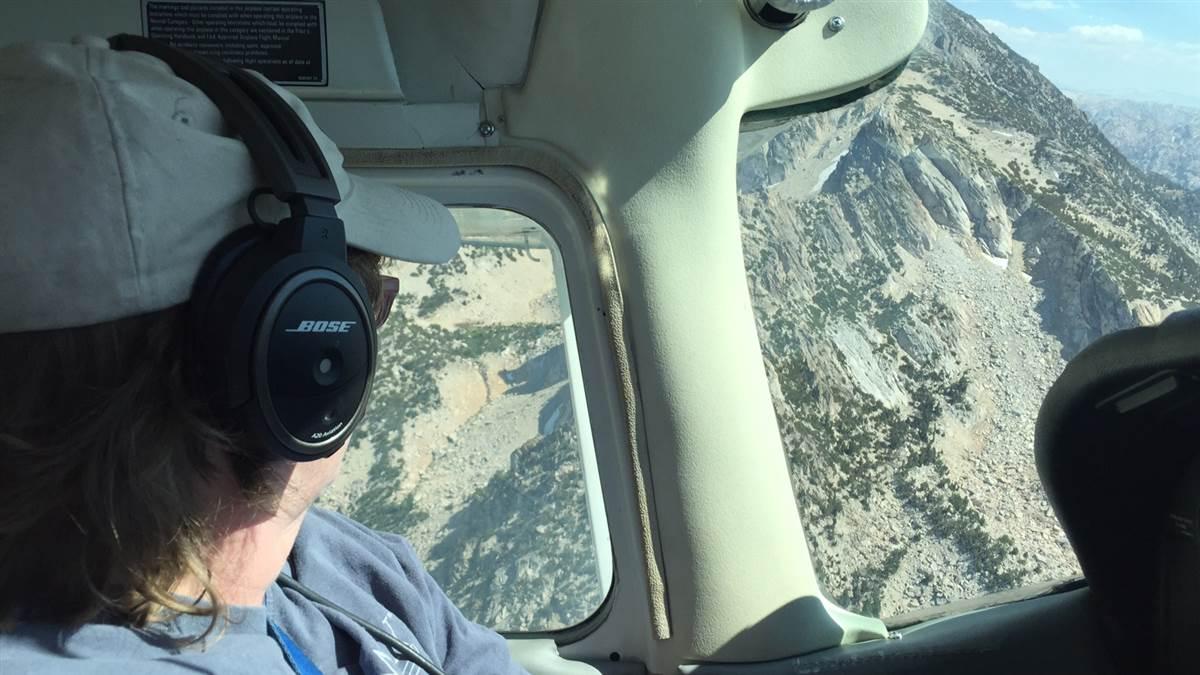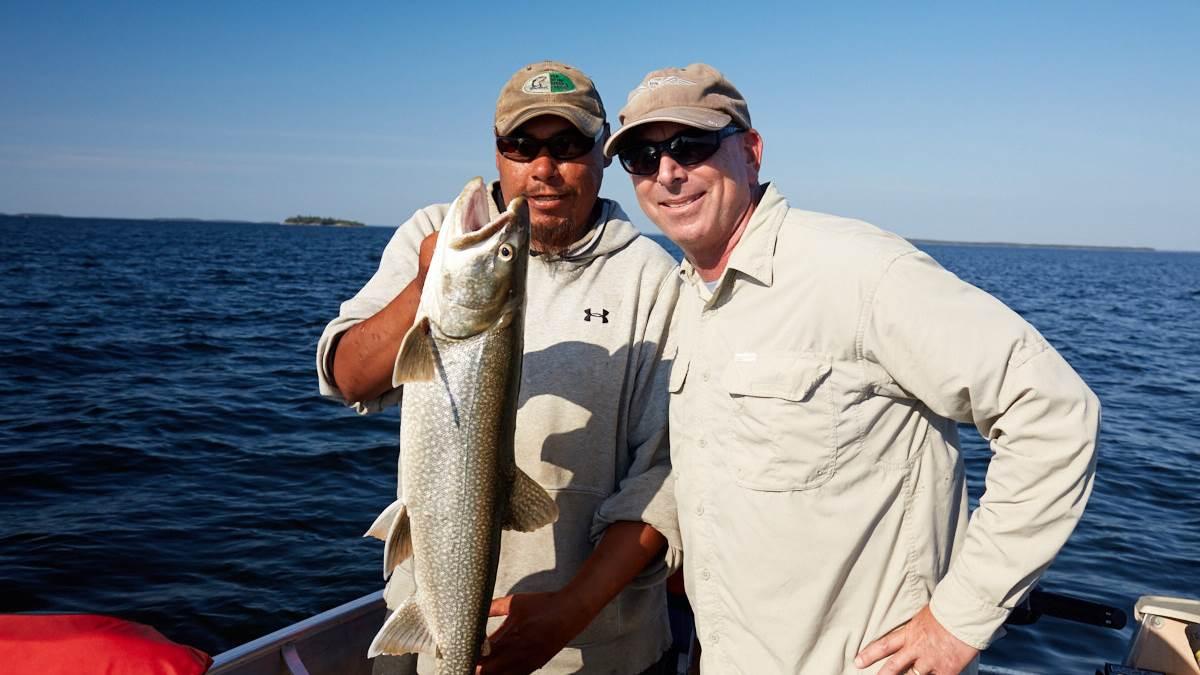Letters from our January 2017 issue
Katie's 180
I wanted to express my appreciation for “A Daughter’s Homecoming.” I could so relate. I live in Nebraska, a rural fly-over state for most. I too love aviation, having taken ground school through my local high school and flight instruction with the local FBO. I thought I might become a jet jockey in the Air Force, but my mom didn’t agree. Off to college I went, getting married, raising four kids, all four graduating from college.
I finally got my private pilot certificate in December 2015. Now my youngest son lives in Kalispell, Montana, and our middle daughter lives in Houston, Texas. Maybe general aviation will play a role in the commute between children. My favorite thing to do at night is to sit out on the deck, watching the stars and enjoying the quiet. I am sure Katie misses the stars and quiet of Montana when she is in the East. Thanks for the great story.
Bruce Hueftle
AOPA 5461281
Holdrege, Nebraska
I had the joy of taking my airplane back to the family farm in Saskatchewan in June 2015. My brother mowed a runway for me in the hayfield, just like Katie’s dad did for her. And just as it did for Katie, landing there fulfilled a dream I’d had for the past 50 years or more. What a thrill!
Doug McDougall
AOPA 4336816
Roseville, California
I have been reading about aviation for more than two decades. This wonderful story is by far the best I have ever read. It really got me emotional, too, which does not happen often.
Katie had a dream and she finally was able to achieve it, thanks to her very good father and her persistence. This is an example of a very good American family.
Thanks to Katie and the Pribyl family for sharing this outstanding story and to AOPA for publishing it.
Richard Magnan
AOPA 5493107
Linden, New Jersey
Big data
I just finished Mike Busch’s article “Savvy Maintenance: Big Data’s Secrets.” I love my
engine-monitor data and say somewhat tongue in cheek that for every hour I fly I spend two looking at data. Just last night I spent 40 minutes looking at a tiny CHT bump in a curve before going to bed.
I just want you to know some of us are at the other end of the spectrum, and don’t ignore all that beautiful data we collect.
Austin G. Watson
AOPA 5252508
Seattle, Washington
Congrats on a beautiful cover. I flew a Cessna 206 for the Forest Service in Montana for six years. Really brings back the memories looking at that gorgeous shot of that Cessna 180. Lyn Freeman, AOPA 4335244In control
Thank you for Barry Schiff’s great article that makes suggestions to improve primary flight display designs so that they prevent loss of control (“Proficient Pilot: Losing Control”). I too was dumbfounded when primary flight display manufacturers displayed digital airspeed and altitude, ignoring the fact that digital watches and speedometers had long since been replaced by analog displays. In addition, his suggestion of green and red airspeed needles that show how close the airplane is to stall speed is absolutely brilliant. Please continue to write articles such as this. I have read every article Schiff has written and enjoyed them all, and have been flying for 50 years.
Tom Pearson
AOPA 337276
Houston, Texas
A digital display is all well and good on my clock radio and microwave oven, I guess, but give me hands on a dial for most of the important stuff. Walt Stepek, AOPA 913525, Titusville, New JerseyADS-B rebates
I recently installed the Garmin GTX 345 in my Cessna 182. My old transponder went out so my decision to go ahead was “made for me”—sure glad I did! I have been flying with the Garmin Pilot app awhile so the 345 was the natural fit. I fly through and around Nashville airspace often and into Fort Campbell military operating areas, and the benefits have been overwhelming. But the biggest surprise of all was the ease of getting the rebate (“ADS-B: Early Adopters Praise ADS-B Traffic, Weather”). If you just follow the procedures it is no problem, and the FAA could not have been better to deal with. Hopefully the cost of the technology will lower over the next few years, but when you “see” what you have been “missing,” the rebate eases the pain in the wallet. Thanks to AOPA for all the free advice.
Terry Jackson
AOPA 6003164
Lewisburg, Tennessee
With the 2020 ADS-B mandate on the horizon and high cost of avionics, I was steering in the direction that 2019 might be my last year of aircraft ownership. In May 2016, I attended the AOPA Fly-in at Beaufort, North Carolina, to learn as much as I could about current ADS-B systems. I learned that Garmin had just come out with the new aera 660 portable GPS that would display the ADS-B In data from the GTX 345 transponder on a larger screen than the L3 Lynx NGT-9000, a product that also impressed me. So I took advantage of a Garmin “bundle” that packaged the aera 660 with the GTX 345.
The system was installed in late July 2016, so I have been flying with “on-board” traffic and weather since August. Having traffic and weather has been truly amazing! I keep the aera 660 cradle mounted on the panel. Since the GTX 345 will support an iPad with Foreflight, that puts incentive toward a possible future iPad. I will admit that I was as negative as anyone on “having” to install new equipment for the 2020 mandate, but after experiencing a second set of eyes for traffic—plus all the FIS-B data including weather, TFRs, et cetera—this is the best upgrade I have ever added to the airplane. I have absolutely no regrets on upgrading to the ADS-B In/Out system.
Bruce Oberstar
AOPA 3660512
Pickens, South Carolina
I want to share our experience with ADS-B with you. Our aircraft went in about December 10 and we got it back about December 22. The shop told us at the time of pickup that they were booking for May. We went with the Garmin GTX345 paired with an aera 660. We did our flight for the rebate on January 1. I submitted the rebate information on the same day. We received four “greens” on January 1 and our claim was approved on January 3. We received our check in the mail on January 13. It was a good experience and we are pleased with the overall process.
Greg Malkowsky
AOPA 810090
Oshkosh, Wisconsin
Rookie meets a legend
An AOPA member asked me to share an experience I had during an exhibition flight in a Shrike Commander piloted by Bob Hoover at the 1968 Reading Air show (“Pilot Briefing: Aviation Legend Flies West”).
At the time, I was newly hired as a public relations specialist with Aero Commander at Rockwell, who never heard of Mr. Hoover or his extraordinary flying abilities.
When the time came for Bob to board the airplane, he asked if anyone wanted to accompany him during the demonstration flight. With a 35-mm camera in hand, I agreed to join him along with several others from the management team. Still not knowing what might lay ahead, I sat calmly near a window to take some photos.
Once we were airborne, Bob circled the airport several times, then approached the runway as if we were going to land. Little did I know, the show was about to begin. Flying just feet above the runway, Bob started to climb heavenward. I remember saying to myself, “You can handle this, Bob’s a pro.” Then, the camera sitting on my lap began to float upwards. I was a witness to some aeronautic voodoo better known as vertigo.
At the end of the flight, I decided to have some fun by exiting the airplane, with camera in hand, and kiss the ground. Laughter followed.
Wally Zimmer
Gilbert, Arizona
Multipurpose tracker
In your “Proficiency and Efficiency” article “Satellite Saviors” on pages 80-81 you state in the table for Spidertracks “Nonaviation Applications—No”. This is not true as I use my Spidertracks every winter on my snowmobile and could use it in the summer on my ATV or anytime on any vehicle that has a 12-volt cigarette lighter outlet or anything with a portable 12- volt source. You should correct that statement.
Jerome Morrison Cain
AOPA 1202352
Lincoln, Montana
Hangar Talk
 Technical Editor Jill W. Tallman does not like turbulence. “It’s always been one of my least favorite aspects of flying,” she says. Flying to the Sierra Nevada Mountains (see “Higher Education,” page 52), Tallman knew she had to challenge herself. She was one of four pilots in a Cessna 182 flying from Truckee-Tahoe Airport to Bishop Airport and back to Truckee-Tahoe. “I knew the flight out in the cooler morning would be calmer, so I rode in the back,” she says. “I was in the left seat for the trip back, when the thermals started acting up. Forty-five minutes into the flight, the backseat pilots begged for a break from the stomach-churning ride, so we landed at Lake Tahoe Airport—just in time.”
Technical Editor Jill W. Tallman does not like turbulence. “It’s always been one of my least favorite aspects of flying,” she says. Flying to the Sierra Nevada Mountains (see “Higher Education,” page 52), Tallman knew she had to challenge herself. She was one of four pilots in a Cessna 182 flying from Truckee-Tahoe Airport to Bishop Airport and back to Truckee-Tahoe. “I knew the flight out in the cooler morning would be calmer, so I rode in the back,” she says. “I was in the left seat for the trip back, when the thermals started acting up. Forty-five minutes into the flight, the backseat pilots begged for a break from the stomach-churning ride, so we landed at Lake Tahoe Airport—just in time.”
 “The most surprising part of flying to polar bear country is that it’s so accessible,” says AOPA Pilot Editor at Large Dave Hirschman (right), who flew to the Hudson Bay in a pokey Piper Super Cub (see “Northern Exposure,” page 42). “It’s about 800 miles from the Canadian border, and that’s just one or two fuel stops for most piston GA airplanes,” he says. “The climate, geography, and wildlife tend to change dramatically when flying north-south, however, so by the time you get to Churchill, it feels like another world.” Making the trip as part of a group (organized by Adventure Seaplanes in Minnesota) made the cross-border journey more fun and less intimidating, he says.
“The most surprising part of flying to polar bear country is that it’s so accessible,” says AOPA Pilot Editor at Large Dave Hirschman (right), who flew to the Hudson Bay in a pokey Piper Super Cub (see “Northern Exposure,” page 42). “It’s about 800 miles from the Canadian border, and that’s just one or two fuel stops for most piston GA airplanes,” he says. “The climate, geography, and wildlife tend to change dramatically when flying north-south, however, so by the time you get to Churchill, it feels like another world.” Making the trip as part of a group (organized by Adventure Seaplanes in Minnesota) made the cross-border journey more fun and less intimidating, he says.

 “Here’s the headline on Cuba: It’s beautiful, the people are wonderful, and it’s within reach of almost any airplane. Incidentally, N-registered aircraft and American pilots are now allowed to fly there and back from the United States,” says Editor Ian J. Twombly. “Although that is all true, planning a trip is complicated and time consuming, not to mention expensive. You have to trust that the rewards are worth it. And they are.” Twombly and Senior Photographer Chris Rose flew down late in 2016 in a Beechcraft Bonanza to tour Havana (see “VISITORS WELCOME,” page 68). “Go now while it still feels special. You won’t regret it,” says Twombly.
“Here’s the headline on Cuba: It’s beautiful, the people are wonderful, and it’s within reach of almost any airplane. Incidentally, N-registered aircraft and American pilots are now allowed to fly there and back from the United States,” says Editor Ian J. Twombly. “Although that is all true, planning a trip is complicated and time consuming, not to mention expensive. You have to trust that the rewards are worth it. And they are.” Twombly and Senior Photographer Chris Rose flew down late in 2016 in a Beechcraft Bonanza to tour Havana (see “VISITORS WELCOME,” page 68). “Go now while it still feels special. You won’t regret it,” says Twombly.


